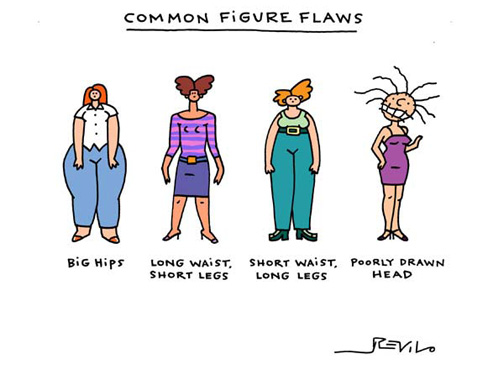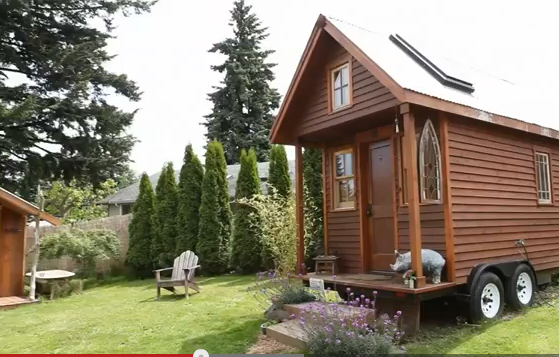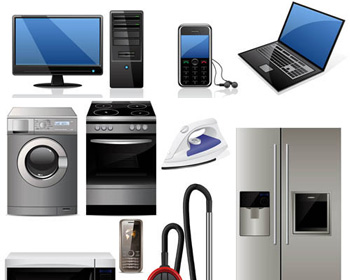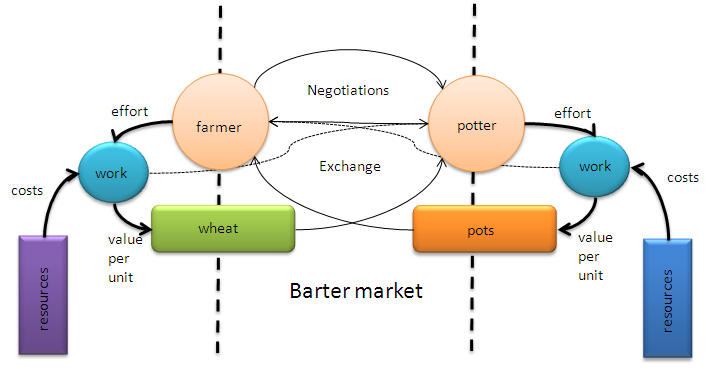I can’t claim credit for the idea that my father and mother-in-law move in with us. Or that we move my mom from her nursing home into my office. . . .
. . . .Because that would be five people and two dogs in the same house with a baby on the way!
Oh, no. It was my optimal Wife that came up with this masterpiece. She saw the mounting nursing home bills, knew a baby was coming and swung into action. By the time she was finished laying it all out, one night after work, she had a way to upgrade all of our lives. And that upgrade goes double for her. But, what can I say? It was her idea.
Her radical plan was to have us all living together. We would divide up tasks according to our abilities, split costs where we could, spend time together, help her parents ramp down from a lifetime of work and bridge the 3000 mile distance between our baby and its grandparents.
She was proposing we live like a family. A multi-generational family.
It was outrageous!
The American Way?
Why wasn’t this anti-radical vision my idea?
Because I grew up in Florida in the late 70’s/early 80’s. A period in American history when we were doing all we could to make ourselves into personal sovereign nations.
Families were relocate-able units set up to follow the money wherever it lead. Women’s lib ‘freed up’ mom to go to work. Dads were encouraged to do whatever to ‘find themselves’. And the kids watched Miami Vice and thought the drug dealers were way better off than Crockett and Tubbs. The only question was how we were gonna get one of those Ferrari’s and live in a mansion in Miami without getting arrested?
Family. Aren’t those the people you live with until you get a job? Everyone knows the goal is to decrease the number of generations in one house from two to one!
Not so fast.
What was left over from mom’s check after taxes barely paid for babysitting and Friday night pizza. Dad got sick of microwaved hot dogs and found out how much better life was with mom around. Mom didn’t like office politics. And my brother and I were hard pressed to improve on my father’s job, which he loved. We were living pretty well and dad
still managed to retire at 52.
Panic
But, what’s happening here? Isabel and I have only been married for 16 months and we’ll never be alone in the house together again for at least 18 years or more! How could we stand that? Doesn’t everybody feel on top of each other? Who pays for all the food, mortgage, utilities, cable and what about all the potential noise and distractions all the time of everyone in the kitchen?
The Decision
Most of what makes life good or bad is set by five decisions or less.
Make them well and you eliminate 95% of the life’s friction. Make them badly and you’re plagued with problems that aren’t even solvable. This was one of those decisions.
For all my talk about optimizing everything and making balanced decisions from every vantage point my wife just fell asleep with a problem and woke up with the solution. But, Making the final decision gave me a headache for the next three weeks.
If I list everything that concerned me over living as a multi-generational household it would be the length of the phone book. Everything is affected by a decision like this.
Take the big things like space, time, money, personalities, family, daily activities, food, alone time and noise. Then imagine how each one affects the others on the list. Then factor in that we’ve only been married for 16-months. Add in that we would be taking on the full-time care of my mom who had two strokes, last year. And don’t think too much about that baby on the way or you might go a little nuts.
“Don’t make such a big deal about it.”, Isabel said.
First of all, you can’t get all the facts to make a decision like this. The permutations are not computable because you don’t have solid data for input. Its all anecdotal evidence from people you don’t know. How do I know these people share my values and preferences?
In the end, I used three tools to help make the decision: A mind map, a stop-loss provision and a leap of faith.
On the mind map I listed out every concern that came to mind. I drew lines connecting every box that affected the others (There were a lot of lines). I googled as much as I could to get other peoples’ experience. I tried to come up with a creative solution to anything that still caused concern. Then I slept on it, woke up, and did the same thing again. For Three weeks.
After all that I was ready to consult my newly informed intuition.
The result? Few problems that couldn’t be worked out. Everything depended on the personalities and character of the people involved. And these were unknowns in the circumstances under consideration because none of us had had lived this way before.
Several times in our brief marriage I asked my wife to have faith in something I felt strongly about and she went along. Things turned out as predicted and I’d like to think she’s more comfortable with my judgment. Now the shoe was on the other foot and she was asking me to have faith in her instincts. You might say, I owed her one.
You might also say there’s no way to eliminate the “Leap of Faith” aspect to a decision like this. But, her certainty did make the leap easier.
OK, so it might work. But, what if we’re wrong? Is there any way out?
To feel more comfortable in taking the first steps we put a few stop-loss provisions in place:
- Fabio and Martha rented their house in Florida rather than sell it.
- I made a two-year commitment to see if it would work.
- I designed an addition to the house in case we didn’t have enough space.
With the mind map to mentally sort through the details, the leap of faith I owed Isabel and the above stop-loss provisions there were no excuses left to postpone the decision.
I was satisfied the downside to giving it a try had been minimized.
Moving In
Martha
Martha came first. She put in her notice to St. John’s, put on a baby shower for us and said her goodbyes to all her friends in Orlando. She was getting out of retail at the perfect time. She had been on her feet for 20 years and it was time to take a break and be with her daughter and grandchild-to-be.
In the weeks leading up to her arrival the boxes trickled in at the front door and were hauled up to the jungle, our safari theme guest room, one-by-one. If there was a time of nervousness for me it was watching the boxes arrive and wondering what we were getting ourselves into.
Martha is only 11 years older than me and only 3 years older than my friend, David, so there is no generation gap to speak of. When she arrived it was more like greeting a friend than a mother-in-law. It felt like a friend was spending a few weeks with us.
Mom
We had to get training to learn how to take care of my mom. They taught us how to transfer her from the bed to the chair, from the chair to the shower, how to prepare food and ways to help her do exercises. There was also a strict drug regimen that took some getting used to. Support equipment trickled in from the UPS guy. Stuff like wheelchairs, a shower chair, transfer poles and oxygen bottles were arriving every other day.
Then it was time to move my mom into the house. The actual move was the last step in a long project, beyond the scope of this article. It was quite a balancing act to prepare for her full-time care because she’s confined to a wheelchair and needs quite a range of care and attention. Martha took the sting out of all if this and everything went smoothly mostly because of her.
Mom was thrilled in a hundred different ways to be living at home.
After about two months of adjustments and many sessions with physical and occupational therapists we started to get the hang of the work involved. There were lots of medicare forms to sign and equipment to set up. Isabel set up all moms prescriptions to be automatically filled every quarter by just logging on and checking what we were running out of.
Fabio
My mom and Martha were here for about two months before Fabio came. By that time we had most things worked out and running smoothly.
Fabio gave a 45-day notice to the law firm he was working for. Along notice because he was working for his nephew Rodrigo and there was a lot of planning needed for a smooth transition.
When he arrived the house felt more balanced. I didn’t realize the balance had shifted so much to the feminine until he swayed it back to neutral.
Fabio’s first adjustment was what to do when the phone doesn’t ring. Back in Orlando he was getting ten calls an hour on the job. Now there was only the sound of the breeze on the patio, the geese flying overhead and the TV if he turned it on.
It wasn’t long before Fabio’s talents as a chef were put into swing when six cousins came to visit for a week. That brought the total in the house up to eleven for the week!
How’s It Workin’ Out?
After four months it’s working out better than my wife expected with advantages I didn’t expect.
Space
We dodged the bullet on space issues by having a larger house from the start.
We saw 76 houses before choosing this one. Our goal was to avoid having to move again before our kids went to college. The most obvious weakness would have been lack of space and 3049 square feet has been enough. More importantly, the layout is efficient, functional areas are separated and it handles people well. Hallelujah!
Bedrooms
Four of the five bedrooms are taken. The last one is ready for the baby coming next week. Since all kids get their own bedrooms, nowadays, we won’t have space issues until a second child comes along.
Alone Time
Alone time is more than having your own room. We have four options that can be used by anyone in the house:
- The living room is off by itself.
- The patio.
- The outside front of the house on the “Silla de Navidad” or Christmas Chair.
- On the golf course trails.
These areas don’t have doors. However, it’s not easy to find you unless you know where to look.
Guests
When guests come the blow-up beds from Costco come out and go into my office or one of the common areas. My office is perfect for that and the common areas feel like you have your own room.
I think its a waste of house to have rooms set aside only for guests. Many people think guest only rooms are mandatory. I think the mandatory rooms are for people who live in the house. I have no problem giving up my bedroom for a guest and can easily blow-up a bed and sleep in my office for a few days.
Noise
Noise has not been a problem other than my reluctance to sing loudly and write songs when people are around. As a musician I’m sensitive to noise. If its not a problem for me then it probably won’t be a problem for someone else.
Sometimes its hard to watch TV in the family room as people accumulate in the kitchen. But, we have one of those large family rooms connected to a large kitchen. What else would you expect with a room design like that?
If anyone really wants to watch something they go to their own rooms where there’s no interruptions. I’d rather have the family room/kitchen combination because its where everyone hangs out.
Expenses
Household expenses are about 10% higher in the form of electricity, cable, water and gas. We split food, so, food remains the same. You could look at the cost increase in three different ways:
- It’s 10% more expensive.
- That the incremental cost per person added is low.
- That with a 10% increase overall expenses will still be much lower because more people are splitting all costs.
#1 and #2 are self-explanatory.
If you computed #3 by dividing all costs by five it would be a lot of money saved. But, we don’t do that for the same reason most people probably won’t: Money is only one way to keep track of contribution to a household
In our case Fabio and Martha make it more feasible to take on the full-time care of my mom. If mom is living here we save on paying a nursing home. Saving that expense frees up money to pay other expenses and improves the quality of all our lives, my mom’s most of all.
Fabio and Martha rent their house in Florida which pays for their house expenses. They have no house expenses here so can more easily cover bills like health insurance, gas, cell phone., etc.
Our costs have risen by 10% but we had to pay 90% of those costs, anyway. The more economies of scale and division of labor benefits (See below) that occur the more the additional 10% returns.
I think of it like the difference between buying one meal at a restaurant and eating at a buffet. You pay a little more for the buffet, but, the variety and quality of your meal is improved.
Economies of Scale
We can prepare a meal for five people as easily as two. And by scaling the same ingredients to a recipe the leftovers can last for several meals.
The Same goes for grocery shopping. One trip to the grocery store is taken to shop for five people instead of two. The gas, time and effort is the same while the people it serves is more than double. And we can buy the large cans at Costco making the food cheaper by the once. When the cans are opened they’re less likely to spoil and that means less waste.
Isabel and I each have an SUV. Fabio and Martha have a sedan. Since Isabel is the only person who commutes to work she switched to the sedan and her commuting costs were cut in half. Fabio and Martha can use the SUV around town which requires less mileage and gas on the larger car.
Some things are better, but not cheaper. A bachelor has little incentive to cook for himself, but a family almost always does. That leads to more cooked meals which are more nutritional than foraging out of the pantry.
Division of Labor
There are four people instead of two to manage chores or maintenance around the house. We also get the advantages of four people’s strengths instead of two. A task we have equal ability to perform can be rotated. The result is that the house runs smoother with less effort from any one person.
There’s also less stress. We have natural backup for the everyday overhead of living. Anything from a 2-hour trip to the grocery store to answering the door for the UPS guy.
This may seem trivial but it adds up. For me, its led to more work time and less distractions to write articles such as the one you’re reading.
To get an idea how the time and effort saved adds up look at the following list and add up the time you would save if you only had to perform the task every third time it was needed:
- Grocery Shopping
- Running Errands
- Mailing Packages
- Answering the Door
- Washing Dishes
- Screening Telemarketing Calls
- Washing Clothes
- Walking the Dog
- Moving furniture
- Taking Out the Trash
- Preparing meals
Time with Family
We’re knocking it out of the park when it comes to time spent with family. Here’s what I observed around the house in the last month:
- Singing Nat King Cole songs in Spanish on the patio while barbecuing lunch on the grill.
- My mom on the patio with Lucy on her lap and laughing at the lyrics to a Jimmy Buffet song.
- Isabel coming home to her favorite Colombian dish instead of having to make dinner when she’s tired.
- Isabel and Martha on the couch looking at Facebook photos of a long lost friend.
- Talking with Fabio and Martha on the Silla de Navidad about the Fannie Mae/Freddie Mac beginning of the next Great Depression.
- Ricky following around grandpop whining and begging for a walk.
- Martha telling stories of what Isabel was like as a child.
- Visiting vineyards on Sundays after church to pick out a place to have the baby baptized.
- Isabel and Martha and Maju (Fabio’s sister) decorating the baby’s room, together.
I’ve noticed the house is now the Family nerve center for extended family not living here, as well. Keeping up social contact with them is easier.
None of these things would’ve occurred if we weren’t under the same roof for longer than Christmas visits. And the whole situation will be what our children think of as normal. They will assume its just the way family’s live.
Your Optimal Family Living?
So far, yes.
However, I cannot make a whole-hearted recommendation of MG family living to everyone reading this. There are too many prerequisites, many of which are not in your control. I do recommend being open to considering it in light of the prerequisites, listed below.
Money and Family
It is possible to save money living like this. But, a more realistic goal is to improve your quality of life. Most of the benefits are intangible. Like the best things in life they can be counted on your fingers but maybe not in your bank account.
If you’re on the verge of financial disaster this isn’t going to save you. You probably won’t have the temperament or patience to make it work. One of the ways you could ruin it is to walk around with a calculator and tally up every nickel and dime insisting that everyone pay their fair share. Unless your calculator has has a “Quality of Life” button the numbers won’t prove the case, either way.
House Layout is Critical
Layout is more important than size. I’ve seen 2000 sq. ft. houses that would work and 5000 sq. ft. houses that wouldn’t. Here’s a shopping list of features that would make MG family living easier:
- One bedroom per person or couple
- One full bathroom per four people
- Bathrooms accessible without intruding on privacy
- Bedrooms separate from dining room for noise
- Bedrooms separate from family room for noise
- Kitchen and pantry large enough to handle everyone
- House should have places for alone time, besides bedrooms
Including the baby we’ll average 508/sq. ft per person. I don’t know if that’s a magic number because layout is more important that space. Just adding it here for reference.
Good for Everyone
This whole multi-generational family living is voluntary, for everyone. You’d be fooling yourselves to think it was sustainable if there wasn’t something in it for everyone. The more, the better.
Even if your situation does benefit everyone, personalities may not mix. Ours do, so it works. But, any personality friction will only be worse if there isn’t something in it for everyone.
An Extension of Existing Compatibility
My wife and I have similar families, values and goals. And, we were raised in the same part of the country by parents with similar values. During these four months it feels as if our existing compatibility was extended to include our family. Is it really such a stretch that the family she came from is compatible with the family I came from?
Neil Clark Warren, Ph.D. says, “…when two people come from similar backgrounds, they operate from a position of strength. Their relationship is made significantly easier by all the customs and practices they have in common.”
And here’s what he says about the opposite:
“Forging a relationship with an opposite is so hard because every difference you have requires negotiation and adaptation. Accommodation and compromise will necessitate plenty of change. This change creates a kind of stress. If there are too many differences, you may not be able to survive all the strain involved in adapting to each other.”
Starting with you and your wife, a house full of opposites is more likely to zap everyone’s strengths just to cope with all the differences. Families with similar backgrounds, however, can focus on contributing individual strengths for the benefit of all.
The Future
We have many upcoming challenges:
- How do things change when the baby comes?
- A second child?
- What Happens When My Mom Passes Away?
- Estate Planning?
- Building the Addition to the house?
And what challenges will time reveal that we don’t know about yet?
I plan to update this article, every year, for other families thinking of moving in together. I could have used an article like this five-months ago.
I don’t have an all-time final verdict. But, I do have the verdict on the last four months. I will whisper the three magic words my wife most longs to hear: “You were right”.
Copyright © 2008 by Terence Gillespie. Permission to reprint in whole or in part is gladly granted, provided full credit and a live link are given to McGillespie.com










